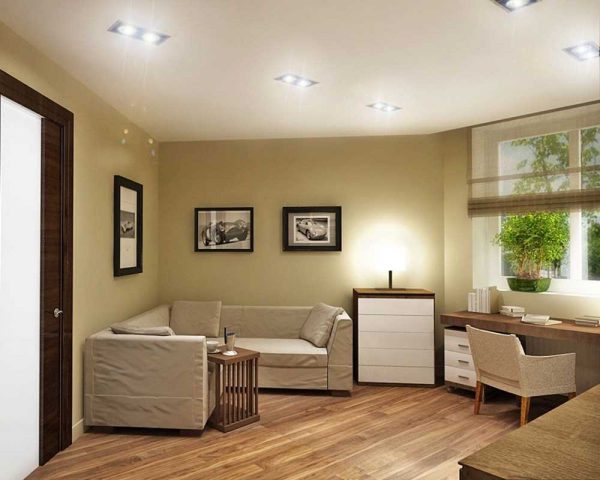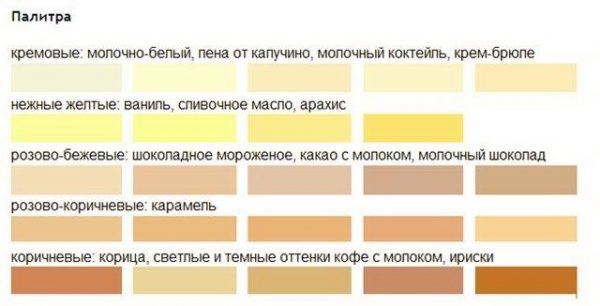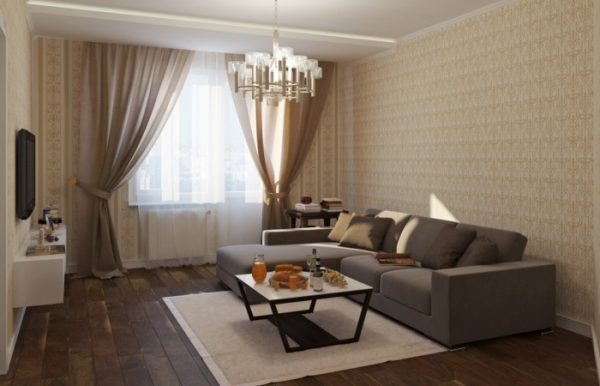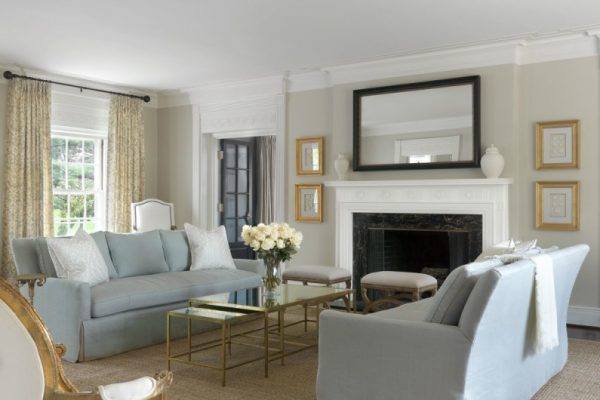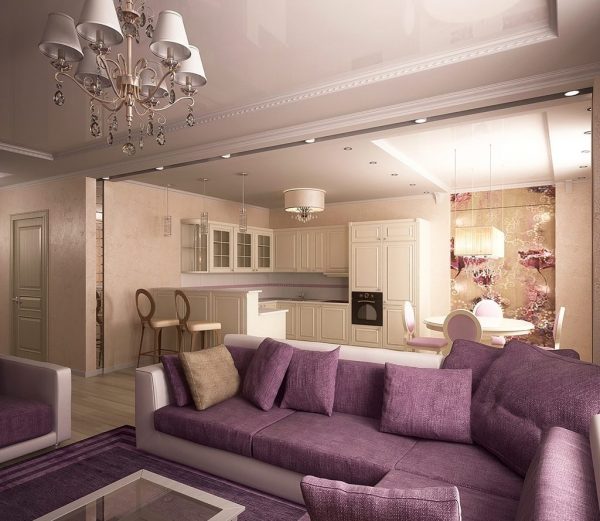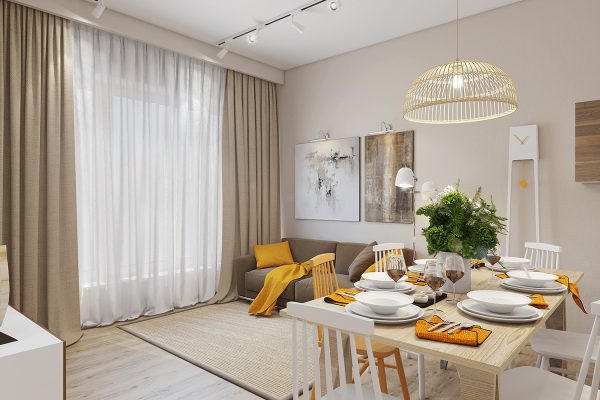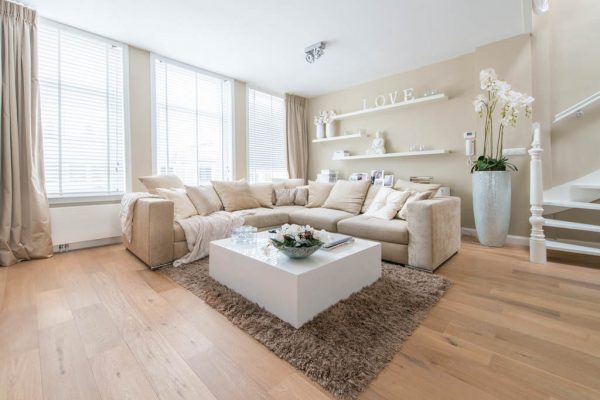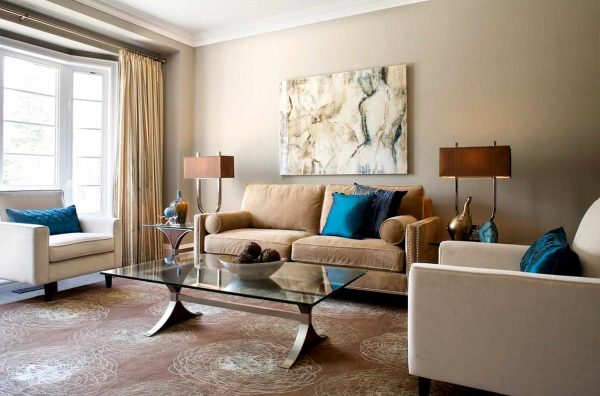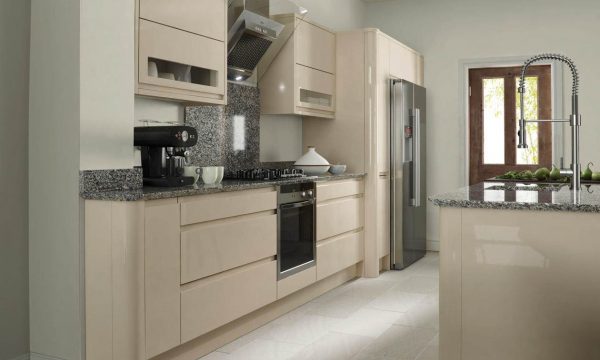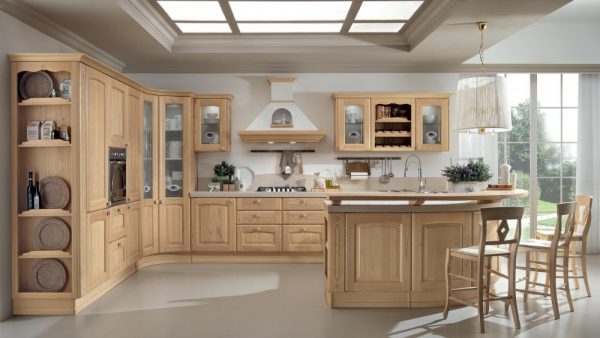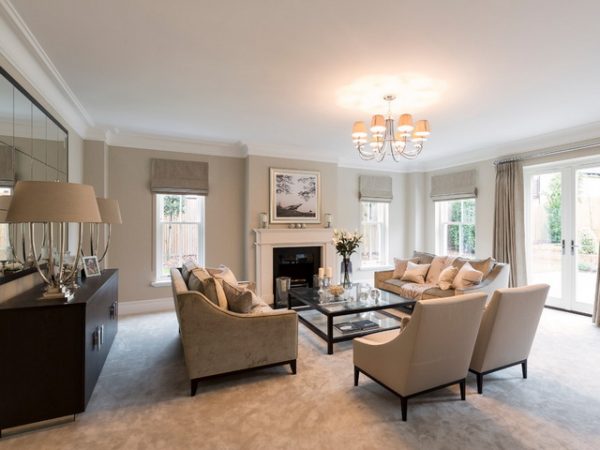To feel comfortable in your own home, you should follow the rules for the selection and combination of colors of the environment. Applied shades, regardless of style, should not cause aggression, they are obliged to improve mood, generally positively affect a person. The beige color in the interior occupies a leading position, because it is pleasant to the eyes, suitable for any room and goes well with other shades.
- Color psychology
- Shades of beige
- Pros and cons of color in the interior
- Combinations of beige and other colors: basic rules
- Beige brown interior
- Gray beige interior
- Beige and blue interior
- Beige and purple interior
- Beige and pink interior
- Beige and yellow interior
- Beige and green
- Beige and white
- Beige and Turquoise
- Beige color in different rooms.
- Beige in the living room
- Beige in the kitchen
- Beige in the bedroom
- Selection of materials and textures for a beige interior
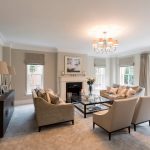
Color psychology
Presenting the apartment in beige colors, many perceive the interior too banal, boring, uninteresting. But any experienced designer will refute this opinion: beige has many shades, it is universal and allows you to conduct various experiments in design. In psychology, beige is indeed considered the “color of stagnation,” a tone that has no emotional coloring. But the correct use of it in the design gives the room a warm, calm energy.
Beige is a natural shade that is found in nature - in landscapes, landscape, stones. Those who like this color are considered soft, soulful, harmonious natures. Such people prefer neutrality and are conflict-free.
Beige leads to relaxation, it is warm, so visually softens the atmosphere. Lighting can change the perception of color: in bright light, a festive atmosphere is created in the living room, in the kitchen, subdued light gives the room mystery. Beige should be used carefully in the interior, because some of its shades expand the room, while others visually reduce it.
to contents ↑Shades of beige
Beige is considered a non-independent color. Even the monochrome design of the room requires a combination of different shades of this tone, otherwise the surfaces will merge. The ideal option is to use beige as a background with bright accents.
Beige has many luxurious shades, examples are given in the table:
| Added tone | The resulting shade |
|---|---|
| Brown | Coffee with milk, light coffee, brown-beige, chocolate and milk, |
| Yellow | Fawn, sand, wheat |
| Pink | Pink-beige, creamy, opal |
Also in the design of the premises shades of ivory (ivory), cream, caramel, milk, biscuit, pearl are considered very popular. Conventionally, the beige color palette includes two categories of shades:
- classic - close to natural beige (caramel, neutral beige, sand, milk and others), allow you to create an elegant interior;
- natural - complemented by shades that are in nature (gray-beige, pink-beige, beige-blue, beige-green and others), contribute to relaxation.
to contents ↑The interior can also be built on contrasts: combine beige with bright, catchy colors (purple, blue, orange, red).Such a design will be interesting and extravagant. In total, there are about 1000 shades of beige, all of them are noble and, when used correctly, look stylish, attractive.
Pros and cons of color in the interior
Using beige for painting walls, furniture, and flooring is a great idea. This shade has a lot of advantages:
- Visual change in space, the ability to create beautiful combinations. Color in its light shades helps to make the room taller, wider.
- Concealment of room defects. If you use beige wallpaper, the slanting of corners and the roughness of the walls will be hidden. Shades that are too dark should not be used; they will only highlight defects.
- No negative effects on well-being and mental health. Beige does not give a pressing effect, soothes. The greatest relaxation is provided by a combination of beige with brown and olive color.
- Versatility in the interior. Due to the fact that beige goes well with most warm and cold colors, it can be used as a base, background in any room. Designers use beige in the bedroom as the main tone of the kitchen or laminate in the living room, the color of the walls in the corridor, it is suitable for all types of decoration. To spoil a room with beige is extremely difficult.
- A variety of textures. Beige materials can have a variety of textures. In combination with a variety of shades, this allows you to design a room interestingly and luxuriously.
to contents ↑A minus of color can be called the fact that the walls painted by it quickly get dirty, and dirt can be very visible on the surface. It is not difficult to solve the problem: you just need to purchase a washable finishing material, easy to wash textiles.
Combinations of beige and other colors: basic rules
If you decide to decorate the interior in beige colors, you need to follow the recommendations of professionals: this will make the room comfortable and boring:
- It is better to use beige as a background for walls. You can take more than one shade, but combine up to three tones of this color, which are close in brightness.
- The play of light and interesting textures will help to express the beige. The beige ceiling should be made multi-level, and for the visual expansion of the borders it is decorated with matte paints.
- To avoid the merging of two similar shades, you need to use border separation. For this purpose, moldings, inserts, drawings, ornament, and other decorative elements are suitable.
- Beige furniture is much more interesting if it is textured. Smooth leather covering of the furniture obliges you to emboss walls, acquire curtains with an original texture.
- Beige rugs and other textile details look beautiful in the interior: pillows, plaids on the sofa.
- When beige of different shades serves as the main color of the ceiling, floor, walls, in the room you need to make bright accents in a contrasting tone. Another option for interior decoration is the walls of rich colors, dark floor and light furniture, doors.
Beige brown interior
According to doctors, the combination of brown and beige in the design of the room relieves stress and the most beneficial effect on the mental health of a person. The main thing is not to add too much chocolate or brown: it should be less than 40%. Such a combination looks especially beautiful in the bedroom and living room, it looks most noble in natural light. The beige-brown range can be diluted with burgundy, gold.
to contents ↑Gray beige interior
This combination is not boring, but, on the contrary, unusual and refined. Like warm and cold colors, beige and gray can contrast. It is best to apply saturated gray colors, diluting them with light cream shades. If you like a natural, calm atmosphere, choose light shades of beige and gray, including tones of green, blue, yellow. Such an interior is decorated with natural textures: stone, wood, put plants in pots.
to contents ↑Beige and blue interior
Usually, beige acts as the background in the room, and blue - its successful addition.Both shades are able to expand the boundaries of the room, "brighten" the space. This combination is considered classic, it is often used by designers when decorating a nursery, bedroom, living room, rooms with poor lighting. It must be remembered that an excess of blue gives the room a feeling of coldness.
Beige and purple interior
Beige and purple - an extravagant combination that increases efficiency, energy. For the cabinet, you can use saturated shades of purple: eggplant, violet. Pastel colors are more suitable for a bedroom: lilac, lavender. Such a combination with the addition of yellow, lemon details will look great.
to contents ↑Beige and pink interior
Beige and pink are a touching, sensual combination of colors. Typically, such an interior is used to decorate girls' rooms and other women's rooms. It is only important to be careful with the amount and saturation of pink, so as not to make the room too intrusive. Elements of white, coral, and purple can complement these shades.
Beige and yellow interior
Yellow and beige - an original combination that provides a sunny, light, elegant look to the room, visually increasing the illumination. Most often, such a design is used in the kitchen, in children's rooms, bathrooms, hallways.
to contents ↑Beige and green
Green adds naturalness to the interior, proximity to nature. Such a combination will be comfortable for the eyes, especially in the presence of white, brown details. You can use both light green and herbal, emerald tones. Beige and green are ideal for the Venetian style, art nouveau, classics.
Beige and white
The white and beige interior needs to be decorated carefully: the colors are close in brightness, therefore they can merge, depersonalize. Beige and white must be correctly distinguished, using moldings, paintings, textiles, metal accessories. Details not only focus on themselves, but also successfully zoning the room. You should not use more than 3 shades of beige, otherwise the room will be "smeared". They will perfectly complement the design of the color of copper, wood, bronze, gold.
to contents ↑Beige and Turquoise
This combination suggests the sea coast. White color, as well as brown and chocolate perfectly complement this interior. It is best to use beige to create the background, and turquoise to “draw” details.
Beige color in different rooms.
Beige can be used in the design of almost any room, but most often experts advise using it in the hall, kitchen, and bedrooms.
Beige in the living room
The guests are welcomed in the living room, so beige will demonstrate the excellent taste of the owner, and will favor spiritual conversations. No less pleasant this shade will be for family gatherings, relaxing after work. Usually for the living room beige is used in country styles, Provence, classic, modern. The basic color combinations for this room are as follows:
- with blue - for lightness, freshness;
- with yellow - for filling with sunlight, warmth;
- with red, burgundy - for elegance, luxury;
- with brown - for nobility;
- with violet - for unusualness, brightness.
In a small room it is better to use cream walls and a sand floor - this will externally expand the boundaries. The dark floor and light walls look good in combination with light furniture. Walls are best made plain, and furniture, textiles, decor - with drawings. Perfectly fits into the living room furniture made of rattan, precious wood, stone and metal accessories. From textiles use linen, silk, wool, heavy fabrics.
to contents ↑Beige in the kitchen
For the design of the kitchen, beige is suitable for any part of the decoration: floor, walls, ceiling. Set, furniture can also have each of the shades of beige.Recommendations for creating a kitchen interior:
- strive for the rule: dark from below, light from above;
- add bright accents - burgundy, red, purple elements in the decoration of the headset, dishes, accessories;
- buy lamps with a warm glow, otherwise beige will have a dirty tint;
- complement the interior with a refrigerator, kettle and other metallic-colored appliances;
- “enrich” the darkened room with orange, yellow decor, well-lit with blue, green details;
- dilute beige with chocolate (in the color of curtains, textiles, paintings).
Beige in the bedroom
The bedroom should have a rest, therefore, it is best to decorate the walls with beige light: such decoration will make the room clear, spacious. To eliminate the depersonalization of color, different shades, textures, patterns are used. Furniture should contrast with the tone of the walls, floor. For example, a corner for cosmetics, a hobby or the head of the bed can be made darker by applying wenge, walnut. As an emphasis, it is worth using textiles, accessories in green, orange, lavender.
to contents ↑Selection of materials and textures for a beige interior
An excellent companion for beige wallpapers is natural wood, imitation wood and various plant materials. Rattan, bamboo, veneer, cork, as well as less expensive materials, such as laminate, are suitable for shades of beige. Looks good wood treated with wood stain.
An interesting design element will be a wall with light decorative plaster, cork and stone inserts. The leather furniture of coffee, cream, milk shades, as well as a sand floor with an imitation of wood structure, is ideal for light-colored interiors. The right approach to interior design will provide comfort and visual pleasure from being in the room, it is only important to correctly combine colors and accents!

